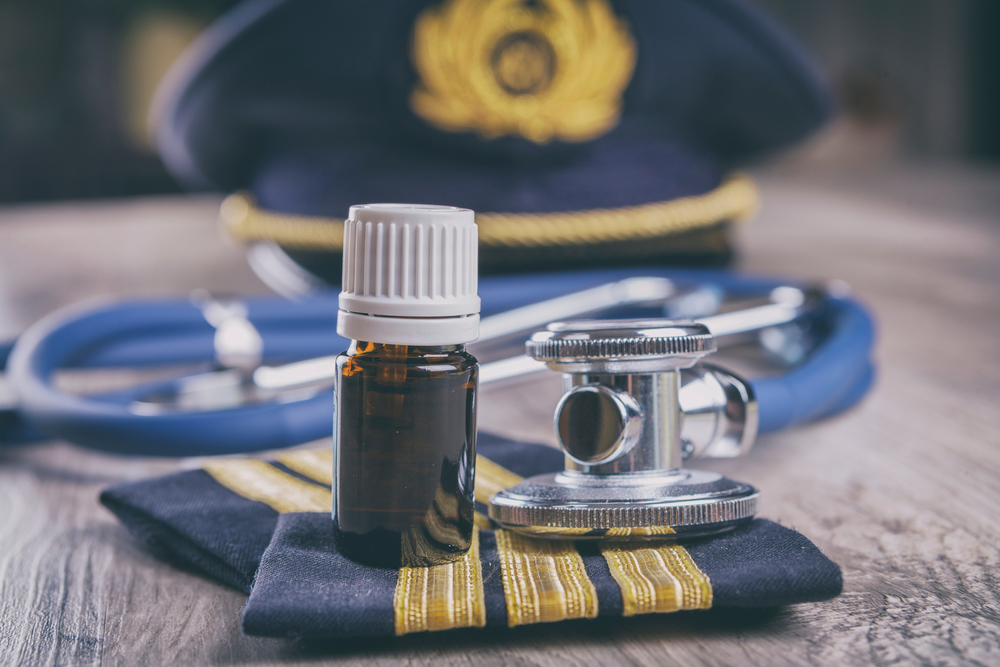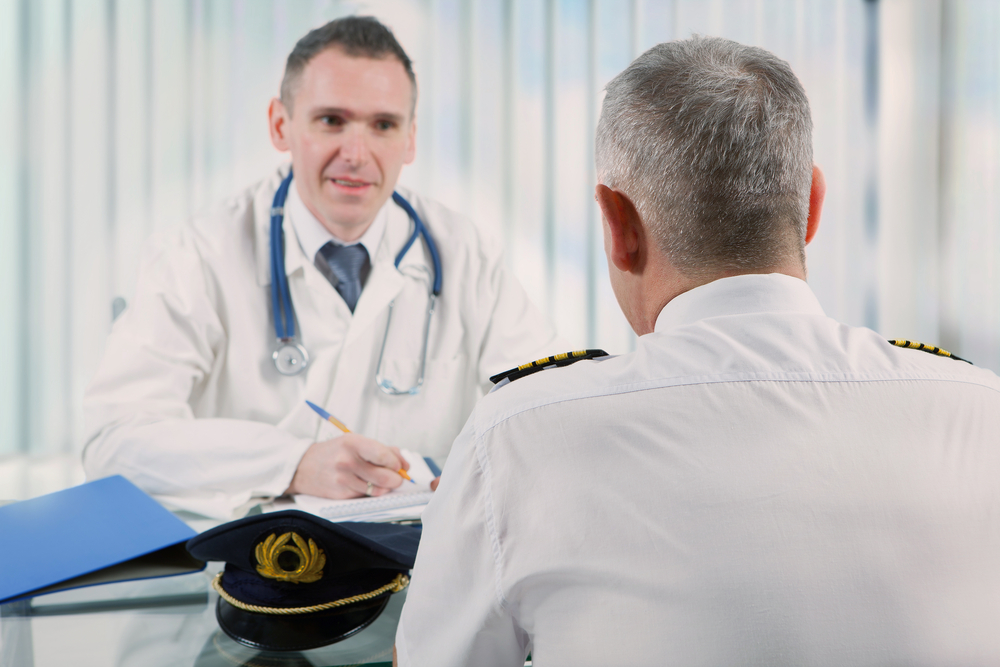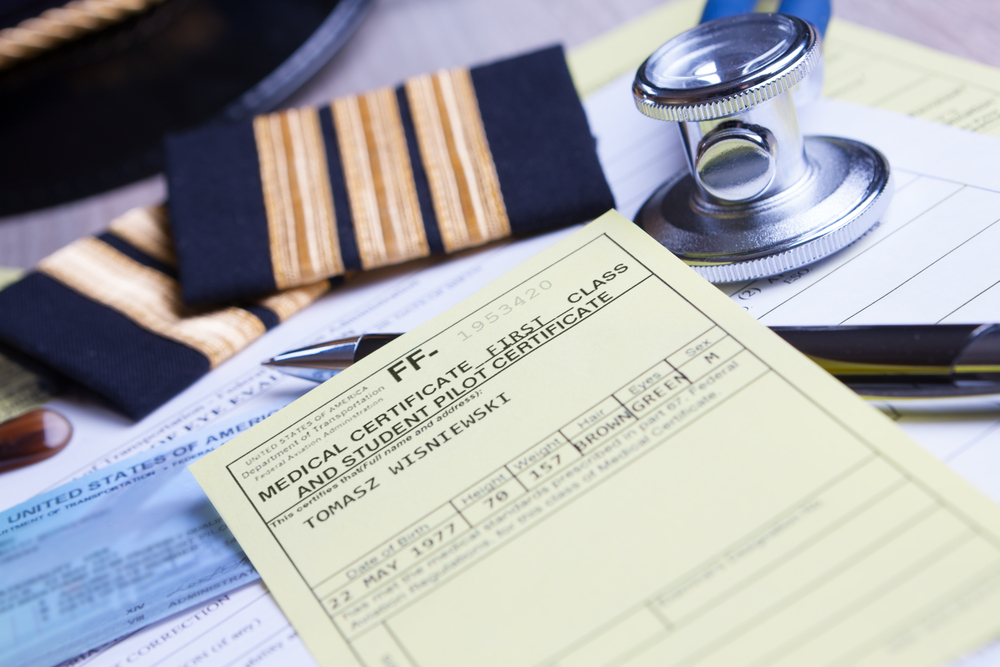Before a pilot ever takes to the skies, there is one critical checkpoint that can ground even the most skilled and experienced aviator: medical certification. Whether you are pursuing a career in commercial aviation or flying in general aviation, this step is mandatory. A pilot’s medical certificate serves as a safeguard, ensuring that you are physically and mentally prepared for flight. But not all medical certificates are the same.
Today, we will break down the different types of pilot medical certifications, explaining who needs which one and why. We will also cover the basics of the medical examination process, validity periods, and differences across various jurisdictions, so you can navigate the process with clarity.
Table of Contents
Why does a pilot’s medical certification matter?
Flying an aircraft puts significant mental and physical demands on a person. High altitudes, complex aircraft control systems, stress, and irregular working hours can all challenge the human body in different ways. A pilot’s health can directly impair their abilities, thereby increasing the risk of incidents or even accidents. Therefore, medical certification serves as a safeguard. It protects not only the pilot but also passengers, crew members, and people on the ground by minimizing safety risks.
All general medical standards applicable to a pilot’s health are based on ICAO Annex 1 – Personnel Licensing. However, national aviation authorities have aligned their certification processes with ICAO’s global standards while adapting them to regional needs and legal frameworks.
Types of Medical Certificates: ICAO regulations
Following ICAO regulations, there are three primary classes of medical certificates intended for pilots with different flying duties.
The Class 1 Medical Certificate is the strictest of the three. ICAO requires pilots operating commercial flights, including airline transport pilots, to hold this certificate. It confirms that pilots meet the highest medical standards needed for the demanding responsibilities of commercial aviation.
The Class 2 Medical Certificate is mainly for private pilots. While the requirements are not as strict as those for commercial pilots, they still make sure a pilot is healthy enough to fly safely in non-commercial environments.
The Class 3 Medical Certificate is issued to aviation professionals like air traffic controllers rather than pilots. It helps confirm that they are in good health to perform safety-critical roles, even though they are not operating an aircraft themselves.
Pilot Medical Certification in Europe under EASA Regulations
In Europe, pilot medical certification and the overall licensing process are regulated by the European Union Aviation Safety Agency (EASA). The medical requirements are outlined in Part-MED of Commission Regulation (EU) No 1178/2011, which forms part of the broader Aircrew Regulation. These rules define the health standards pilots must meet depending on the type of license they hold. In line with the ICAO general framework, EASA classifies medical certificates into three main categories: Class 1, Class 2, and the LAPL medical certificate. This is an additional category not covered by ICAO.
Here is a closer look at how these classifications are structured:
1. Class 1 Medical Certificate
The Class 1 Medical Certificate is mandatory for all pilots intending to operate commercial aircraft. If you are pursuing an Airline Transport Pilot Licence (ATPL) or a Commercial Pilot Licence (CPL), you will need to hold a valid Class 1 certificate. Medical examinations for this certificate must be carried out by approved Aeromedical Examiners (AMEs) or Aeromedical Centres (AeMCs), both of which are authorized to assess your fitness to fly and issue the certificate accordingly.
For pilots under 40 years of age, the certificate remains valid for 12 months, after which a renewal exam is required (regardless of whether you are actively flying or not). For pilots aged 40 and above, or those operating single-pilot commercial flights, the validity shortens to six months.
What to expect during a Class 1 medical examination
This is not your average doctor’s visit. You should expect a comprehensive, head-to-toe screening. The process begins with an in-depth review of your medical history, covering past illnesses, surgeries, medications, and any family health conditions that could affect flight safety.
Next comes a full physical examination, which assesses the body’s major systems. Your cardiovascular system (heart and blood vessels), respiratory system (lungs), neurological system (brain and nerves), musculoskeletal system (bones, joints, muscles), digestive and endocrine systems (thyroid function) will all be evaluated. Vision and hearing tests are also conducted. Doctors must check you for color perception, depth perception, and auditory clarity.
An electrocardiogram (ECG) is also part of the process. This is usually done at the initial exam and repeated periodically, especially as you age. After an ECG, you will undergo laboratory tests, including blood and urine analyses. They are all conducted to detect potential issues such as diabetes, kidney disease, or high cholesterol.
Mental health is another important element of the pilot’s health check. During psychological screening doctors identify stress, fatigue, or emotional conditions that may affect your in-flight performance. Depending on your age and health background, you may also undergo additional tests such as lung function assessments, stress ECGs (conducted while exercising), or audiograms.
There are plenty of myths surrounding pilot health requirements, and they often mislead aspiring aviators. Discover the truth as we debunk the most common misconceptions here.
2. Class 2 Medical Certificate
Pilots aiming for a Private Pilot Licence (PPL) must obtain a Class 2 Medical Certificate, which involves a less stringent medical evaluation than the Class 1. The validity period varies by age: for pilots under 40, the certificate lasts five years; from age 40 to 49, it must be renewed every two years; and from age 50 onwards, it is valid for one year.
What to expect during a Class 2 medical examination
The Class 2 exam follows a similar structure to Class 1 but with a more relaxed approach, reflecting the lower operational risk associated with private flying. It begins with a medical history review to identify any past or ongoing health conditions. While it may not be as in-depth as the Class 1 evaluation, any issues of concern will still be investigated further.
The physical exam focuses on general health and well-being. Doctors will assess key systems, including cardiovascular, respiratory, neurological, and musculoskeletal, but with less detail than in Class 1. You will still undergo hearing and vision tests, and while high standards are expected, corrective lenses are permitted if your vision is stable.
Some basic cardiovascular and neurological screening is included, but unless you are above a certain age or have a relevant condition, you likely will need an ECG or additional diagnostics. Mental health is also assessed, usually through screening questions or a brief conversation with the examiner.
3. LAPL Medical Certificate
EASA does not issue a Class 3 Medical Certificate like ICAO recommends. Instead, pilots holding a Light Aircraft Pilot Licence (LAPL) must obtain a dedicated LAPL Medical Certificate. This applies to those operating single-engine piston aircraft with a maximum takeoff mass (MTOM) of up to 2,000 kg, sailplanes, powered sailplanes, or single-engine helicopters up to the same weight.
The LAPL is required for recreational flying and comes with the least demanding medical standards. Pilots under 40 must renew their LAPL medical every five years, while those aged 40 and above must renew it every two years.
What to expect during a LAPL medical examination
The LAPL medical exam is straightforward. It begins with a review of your medical history, followed by a general physical check-up. Unlike the detailed checks of Class 1 or even Class 2, this exam focuses on your overall health and identifies any conditions that could compromise flight safety.
Vision and hearing tests are still conducted to ensure basic fitness to fly. However, additional testing, such as ECGs or bloodwork, is not required unless your personal health history indicates a need for further investigation.

Pilot Medical Certification under FAA Regulations
In the United States, the medical certification process for pilots is regulated by the FAA. While it mirrors the ICAO framework in structure, it follows its own national standards outlined under 14 CFR Part 67.
The FAA issues three primary classes of medical certificates: First Class, Second Class, and Third Class. There is also a separate pathway known as BasicMed, which is dedicated to certain private pilots who prefer a more flexible alternative to traditional certification.
1. First Class Medical Certificate
The First Class Medical Certificate is required for airline transport pilots and represents the highest medical standard in the FAA system. If you plan to fly for a commercial airline or hold an ATP (Airline Transport Pilot) license in the US, this certificate is non-negotiable.
For pilots under the age of 40, First Class privileges remain valid for 12 months. Once a pilot turns 40, the validity period shortens to six months. However, this does not mean you are grounded when the clock runs out. After expiration, the certificate transitions to Second Class privileges, and later to Third Class. This means you can continue flying after your health certificate expires, but at a reduced operational level.
2. Second Class Medical Certificate
Next comes the Second Class Medical Certificate, which is required for pilots performing commercial operations outside of scheduled airline service. This includes charter pilots, crop dusters, and instructors receiving compensation for their work. While the examination itself is slightly less intense than that of the First Class, it still involves a detailed health review and assessment.
The Second Class certificate is valid for 12 months, regardless of your age. When it expires, it downgrades automatically to Third Class privileges.
3. Third Class Medical Certificate
Then there is the Third Class Medical Certificate. Similar to EASA regulations, it represents the baseline requirement for private pilots and those flying purely for recreational or personal reasons. This certificate supports general aviation flying that does not involve any compensation.
For pilots under 40, it remains valid for five years. But once you hit 40, you will need to renew it every two years. The exam itself is more relaxed, covering the essentials like vision, hearing, cardiovascular health, and mental well-being, with fewer diagnostic requirements than what commercial pilots face.
4. BasicMed
Finally, there is BasicMed. This is a modern and flexible option introduced by the FAA for certain non-commercial pilots. EASA does not have such a classification. If you are flying aircraft under 6,000 pounds, carrying no more than five passengers, staying below 18,000 feet, and not operating for hire, BasicMed might be the way to go.
To qualify, you must have held a valid FAA medical certificate at any time after July 14, 2006. The process involves a physical exam with your regular doctor every 48 months and completing an FAA-approved online medical course every 24 months. No AME visit is needed, and you do not need to hold an active medical certificate. Instead, your driver’s license and a signed health form are enough to stay legal in the cockpit.

Medical certification may not be the most glamorous part of a pilot’s career, but it is one of the most critical. Whether you dream of flying a Boeing 787 across continents or prefer quiet weekends in a single-engine aircraft, your medical fitness is the foundation of safe flying. While regulatory frameworks like EASA and FAA are different in terms of structure and naming, the goal is the same everywhere: to ensure that every pilot in the sky is fit to fly.
If you would like to explore the general requirements for a pilot’s physical fitness in more detail, be sure to check out our next article on the topic.

